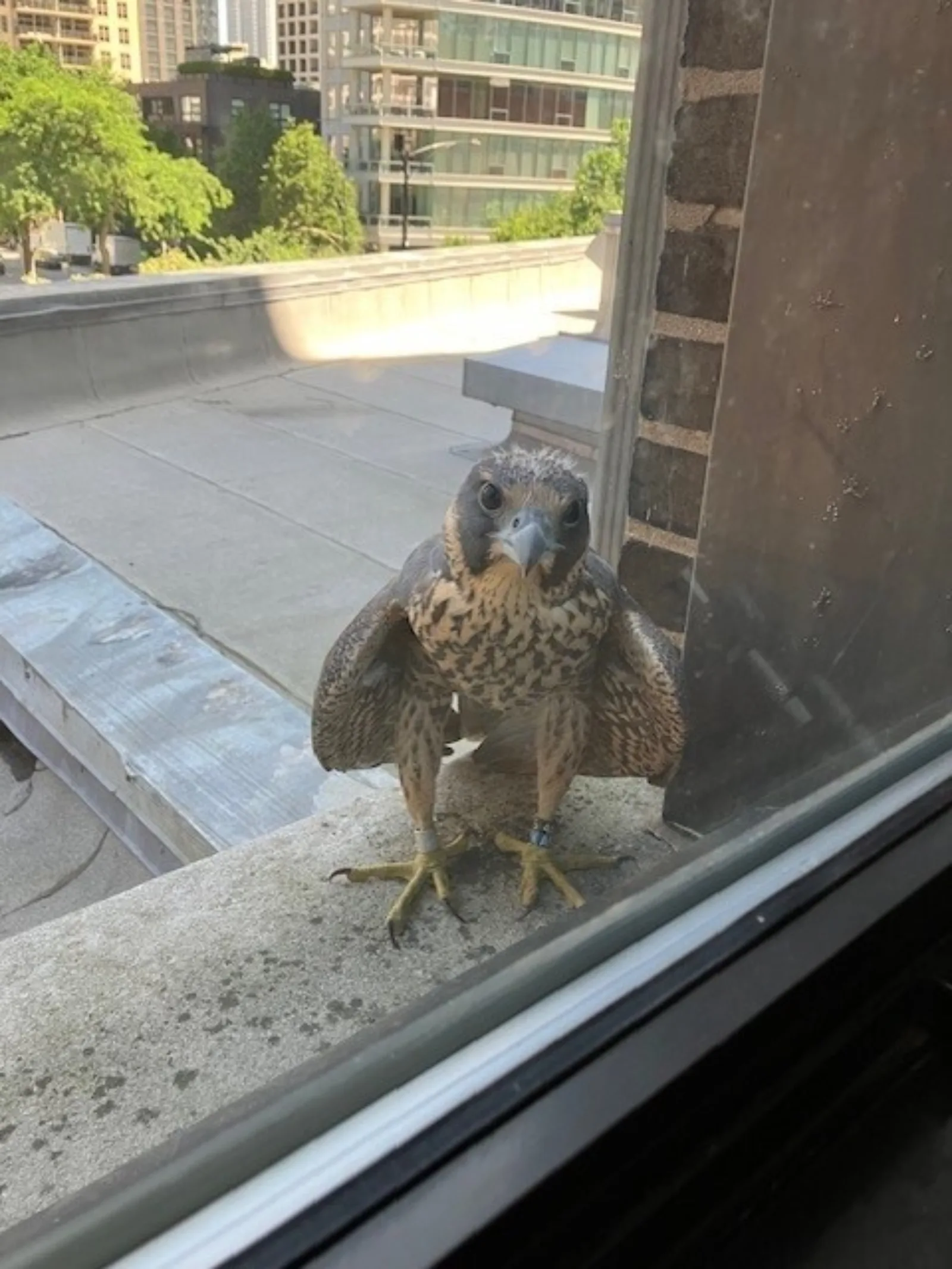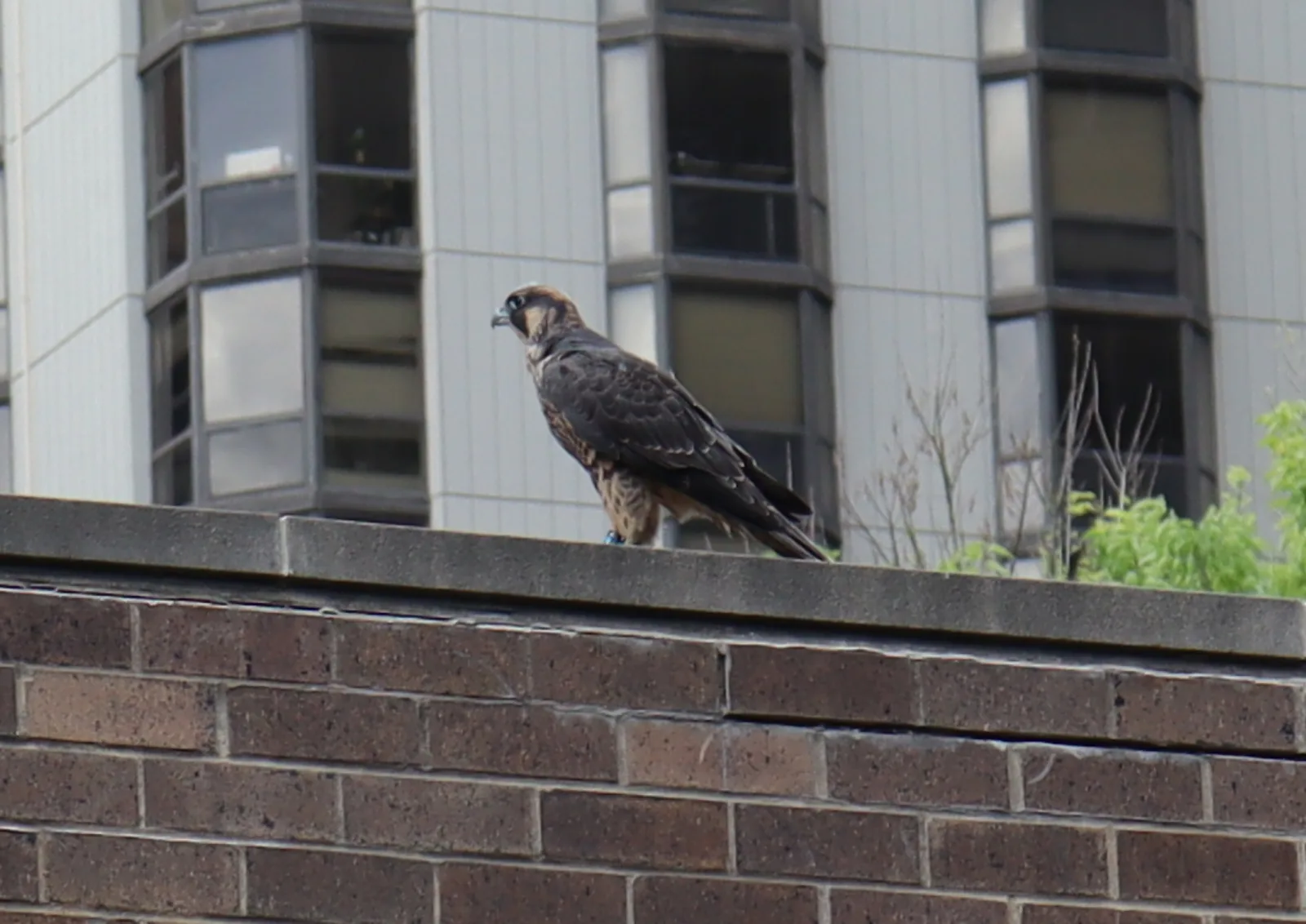Early Monday morning, June 23, I received an email from my colleague Kristin Emery that a possible juvenile bald eagle was perched outside the second floor of the Newberry Library. As the resident birder on staff, I sometimes hear about strange sightings or birds in distress. One time a belted kingfisher flew into the glass of our front doors. A few other times we have found injured warblers beside the building during migration.
This situation seemed different, and not only because our bird-focused Winging It exhibition had opened just three days prior. I wasn’t sure what to expect as I approached a second-floor window that faces the Newberry’s parking lot. After all, a bald eagle would be a very unusual sighting in our highly urbanized surroundings.
When I encountered the bird it was indeed a mostly brown bird, like a young eagle, but it was smaller, with a barred breast and streaks on its face. Indeed, this was not an eagle but a young peregrine falcon—a rare bird in its own right but one that is known to nest on Chicago high-rises. The bird, just a few inches away through the glass, looked back at me and other visitors with something of a curious expression on its face.

It was a terribly hot day, and the falcon looked a bit exhausted, its eyes were blinking, and it was breathing heavily. There were metal bands on its legs, indicating it was likely part of the Chicago Peregrine Program, which for years has worked to protect and monitor the species. I messaged the program on social media and quickly received a reply. Our visitor was a young falcon named Lizzy, hatched this year, and likely was making one of her first flights away from the nest. Everything we were observing was typical of a healthy juvenile, and her parents were likely nearby. Around the same time, Kristin observed an adult bringing Lizzy a meal in the form of an unfortunate yellow-billed cuckoo.
Lizzy stayed at the Newberry overnight, and the next day found a comfortable perch in the parking lot atop a lamp post. She spent the whole day there—another hot one—likely a bit nervous about flying much farther from the mostly safe environs of the library. Finally, around 5pm she leapt from the lamp post up to a sloped roof above our back doors. Lizzy eventually slid down the angled surface and, before taking a fall, went airborne and swooped across the parking lot to a building on the other side of Oak Street. Though she disappeared from sight, it seemed a very successful test flight.
Lizzy captivated many employees in her thirty-six or so hours at the Newberry. Seeing birds up close can have a mesmerizing effect on people and open up conversations about humans’ impact on the natural world. Those who observed Lizzy won’t soon forget the experience.
Explore our new exhibition, Winging It, to learn more about the history of humanity’s relationship with birds.
About the Author
Bob Dolgan is Director of Communications at the Newberry and Curator of the Winging It exhibition.
